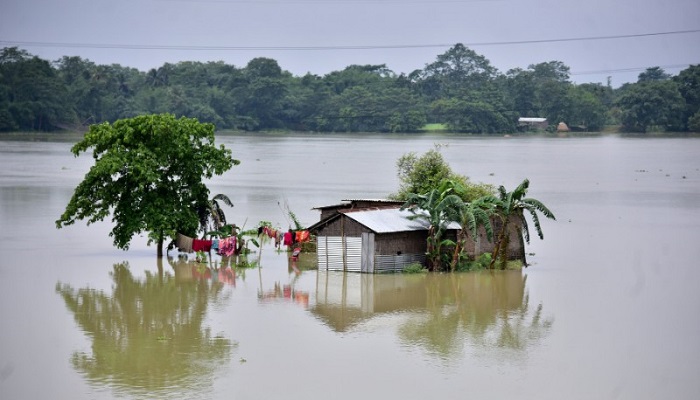Monsoon floods in India and Nepal kill at least 189, displace nearly 4mn people
Assam is facing the twin challenge of combating floods and the coronavirus pandemic
July 19, 2020

Monsoon floods in India has displaced nearly four million people in the northeastern state of Assam and neighbouring Nepal, with dozens missing as deaths rose to at least 189.
The overflowing Brahmaputra River, which flows through China’s Tibet, India, and Bangladesh, has damaged crops and triggered mudslides, displacing millions of people, officials said.
“The flood situation remains critical with most of the rivers flowing menacingly above the danger mark,” Assam water resources Minister Keshab Mahanta told Reuters.
Assam is facing the twin challenge of combating floods and the coronavirus pandemic. Out of 33 districts, 25 remained affected after the current wave of flooding, beginning a fortnight ago.
India is grappling with the novel coronavirus, which has infected nearly 1.1 million people and 26,816 have died from the COVID-19 disease, government data showed on Sunday.
In neighbouring Nepal, the government asked residents along its southern plains on Sunday to remain alert as heavy monsoon rains were expected to pound the Himalayan nation where more than 100 have died in floods and landslides since June, officials said.
Also read: Over a million forced from homes as floods hit India's Assam
Some 110 people were killed and another 100 injured as landslides and flash floods washed or swept away homes, upended roads and bridges and displaced hundreds of others in 26 of the country’s 77 districts, police said.
Home ministry official Murari Wasti said the death toll was expected to rise as 48 people were still missing.
“Search and rescue teams are looking for those who are missing in different places but chances of finding them alive are slim,” Wasti told Reuters.
Barun Paudel of the weather forecasting office in the capital, Kathmandu, said heavy rains were expected to pound much of the mainly mountainous nation in the next four days.
“We have urged residents to remain alert against possible landslides and floods,” he said.
Landslides and flash floods are common in Nepal, India’s Assam and Bihar states during the June-September annual rainy season.











